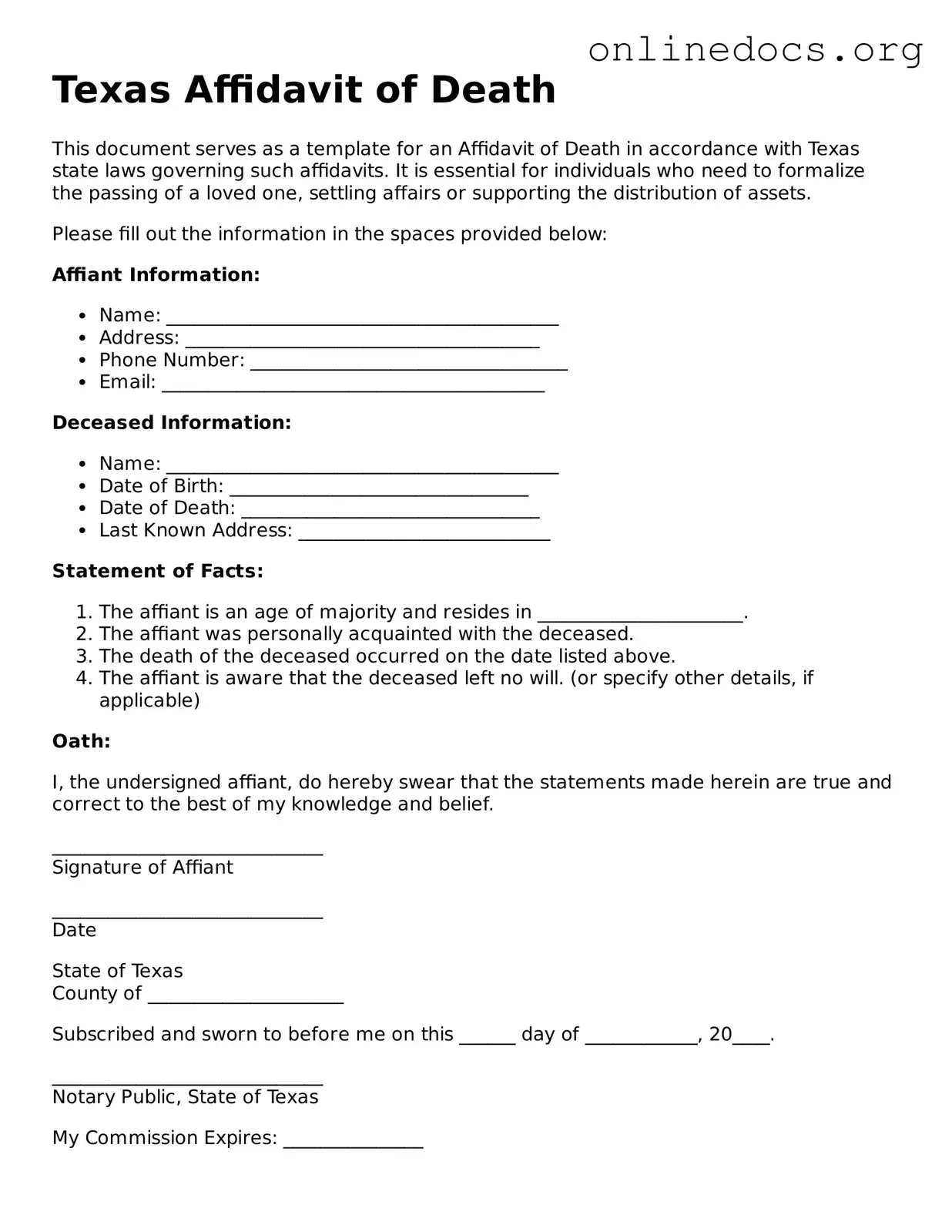The Texas Affidavit of Death form is similar to the Affidavit of Heirship. This document is used to establish the heirs of a deceased person when there is no will. Just like the Affidavit of Death, the Affidavit of Heirship is signed by individuals who have knowledge of the deceased's family history. Both documents serve to clarify the legal status of the deceased's estate and can help facilitate the transfer of property without the need for probate proceedings.
Another document that shares similarities is the Last Will and Testament. A Last Will outlines an individual's wishes regarding the distribution of their assets after death. While the Affidavit of Death serves to confirm the death of an individual, the Last Will provides instructions on how the estate should be handled. Both documents are critical in estate planning and can significantly impact the distribution of assets.
The Declaration of Death is also comparable to the Texas Affidavit of Death. This document is used in situations where a person has been missing for a certain period and is presumed dead. Similar to the Affidavit of Death, it requires evidence to support the claim of death. Both documents aim to establish the fact of death for legal purposes, allowing for the resolution of the deceased's estate.
When engaging in trailer transactions, it's essential to utilize a Trailer Bill of Sale for clarity and legal certainty. This document not only confirms the sale between parties but also provides critical information regarding the trailer's ownership transfer. For those looking for a comprehensive template, legalformspdf.com offers valuable resources to ensure compliance and completeness in the documentation process.
The Certificate of Death is another relevant document. This official record is issued by a government authority and confirms the death of an individual. While the Affidavit of Death is a sworn statement made by individuals, the Certificate of Death serves as an official acknowledgment. Both documents are essential for settling an estate and can be used to notify financial institutions and other entities of the death.
Finally, the Application for Letters Testamentary is similar in that it is used in the probate process. This application is filed by an executor named in a will to obtain legal authority to manage the deceased's estate. While the Affidavit of Death is focused on confirming the death itself, the Application for Letters Testamentary initiates the legal process for administering the estate. Both documents are vital for ensuring that the deceased's wishes are honored and that the estate is settled appropriately.
